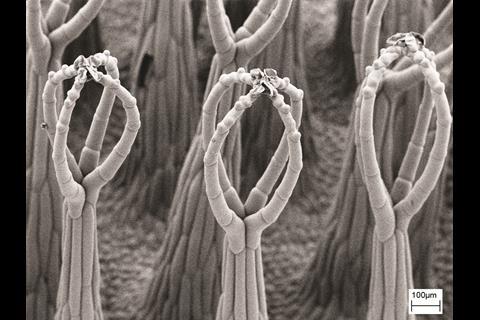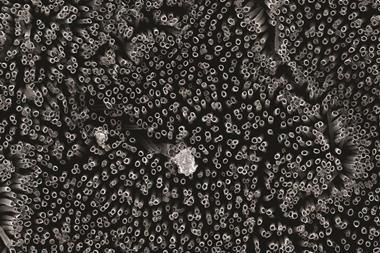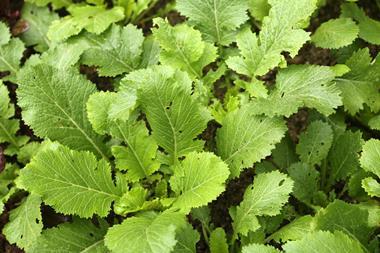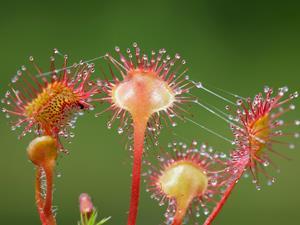Leaves of weed could even be used to mop-up slicks
The hairy leaves of plants that repel water but absorb oil are being studied by scientists in Germany who hope they can use the structure to design better materials for mopping up oil spills.
Many prototype oil-absorbing materials are based on sponge-like porous polymers and aerogels, but Hendrik Hölscher’s group at the Karlsruhe Institute of Technology has taken a different approach. The group has designed and patented a plant-inspired material that uses lots of tiny hairs to trap oil.
Their ‘nanofur’ mimics a group of aquatic ferns called Salvinia spp. whose superhydrophobic leaves are covered in fine hairs. The group carried out tests on fresh and dried leaves of various Salvinia species and found some of them performed better than commercially available oil sorbents in terms of the speed at which they could absorb oil and the amount by weight they were able to hold. The team also used electron microscopy to identify the structural features that affected the leaves’ oil absorbing properties.
‘The most important lesson we learned from out experiments is that hairy absorbent materials are generally better than non-hairy,’ says Hölscher. In general, longer hairs were found to be better at trapping oil. ‘The shape of the hair ends is [also] important, because they need to support the oil–air interface to ensure maximum oil absorption and retention,’ he adds.
Hölscher says the team will use their observations to improve the design of nanofur, with the ultimate goal of developing a low-cost material for oil spill cleanup. ‘Fabrication of nanofur is [already] a comparably simple process,’ says Hölscher. ‘It can be produced by pressing a hot rough steel plate into a polymer foil. The surface of the polymer melts, and when the steel plate is retracted, micro- and nanoscale hairs are pulled from the surface.’
It may even be possible to use the plants themselves for environmental remediation, Hölscher adds. ‘They are pest plants in many regions of the world, [so] using them as oil absorbers might potentially solve two problems at a time: removal of unwanted plants and production of natural and selective oil sorbent materials at low cost.’
Thomas Speck, an expert in plant biomimetics and director of the Freiberg Botanic Gardens in Germany, says the research is interesting, and bears similarities to other work which looked at the hairy hind legs of oil-collecting bees to develop a cloth for mopping up oil.
References
C Zeiger et al, Bioinspiration Biomimetics, 2016, DOI: 10.1088/1748-3190/11/5/056003



















No comments yet